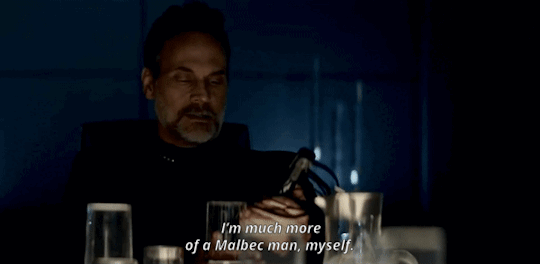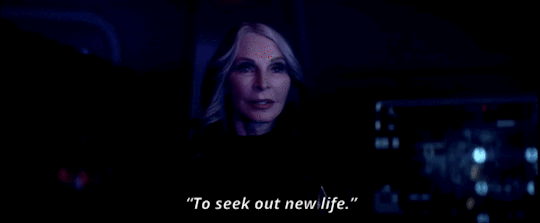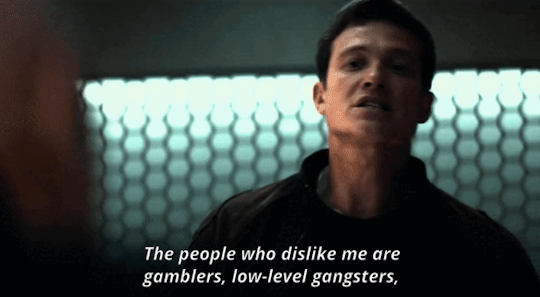#picard 3.4
Explore tagged Tumblr posts
Text

❤️❤️❤️❤️❤️❤️❤️❤️❤️❤️❤️❤️❤️❤️❤️❤️


#picard#star trek#star trek picard#season three#no win scenario#picard spoilers#picard bingo#i love this so much#tng love letter#beverly crusher#season 3 bingo#moriarty wasnt mentioned it…. holodeck on a separate system HAS to be because of him#picard 3.4#picard season three#picard season 3#picard season three bingo
5 notes
·
View notes
Text








Star Trek: Picard season 3 AKA when everyone collectively decided to make fun of Château Picard and annoy our favourite French admiral
3.1 "The Next Generation" 3.4 "No Win Scenario" 3.6 "The Bounty" 3.8 "Surrender"
#captain shaw#liam shaw#jean luc picard#seven of nine#will riker#jack crusher#worf#geordi la forge#data#beverly crusher#sidney la forge#alandra la forge#star trek picard#picard season 3#star trek#star trek tng#star trek legacy#star trek edit#trekedit#todd stashwick#patrick stewart#ed speleers#michael dorn#jonathan frakes#levar burton#my gifs#chateau picard#one of a few clever and comedic recurring themes throughout season 3#and this one was just brilliant
154 notes
·
View notes
Text
Picard 3.4: No Win Scenario
Subtitle: it's about trust (in the story, the cast, and the audience)





Pixie Recaps Picard | No Win Scenario
#star trek picard#jean luc picard#beverly crusher#jack crusher#will riker#seven of nine#liam shaw#pixie recaps picard
78 notes
·
View notes
Text
Preliminary thoughts on the second half of 3.4:
“Bob’s your uncle, Fanny’s your aunt” wtf Jack. Is this a thing people say. ETA: apparently people really do add “Fanny’s your aunt” on the end of “Bob’s your uncle”. THE MORE YOU KNOW
Oooh Jack looking at his mother while she talks about Deanna… All these ghosts that hovered around his childhood suddenly aren’t ghosts anymore!
No Raffi and… do I give a Bechdel point between Seven and the changeling? I’m gonna say no bc changeling gender unknown and also bc come the fuck on.
Sidney LaForge shoulda gotten to do more: my first thought is she should’ve been the one to think of throwing the asteroid at the ship, given that she excitedly talked about it when Vadic did it to them, but alternatively they could have also done a thing where ~oh~ people think she’s not a great pilot but when she follows her instincts in a situation with less fancy tools she’s magic! (aka give her Jack’s “wait 4 more seconds trust me” moment)
I care very much about Jack’s sad little face and his sad little cap at the bar and the feelings I am going to assume he has about Starfleet being a fucking. Simultaneous shadow over his whole life that’s the reason he doesn’t have a brother or a dad or stepdad and his mom doesn’t have friends and a bright shining thing that his mom and dad both talk about like it was something incredibly magical and that he doesn’t get to be a part of. BUT I do think all the reasons I brainstormed for Jack not wanting to meet Picard were less cliched and I’m going to continue to headcanon a whole bunch of factors. (Also it’s very hard for me to let go of Jack just being a bitch to Picard for no particular reason I preferred that. I also preferred the shining moment when “I never had [a father]!” was not the cliche bitterness at Picard not being there but instead a defiant statement that his sperm donor is irrelevant and no one is going to tell him that he has or needs a father.)
Oh and Jack saying “I know my mother didn’t hate you but” about his name, interesting. Did he assume she did at one point? More emphasis on Beverly not talking about history. But also, more Beverly being characterized in what people say about her while she’s offscreen.
Entirely insufficient Beverly. Why am I not watching a show called Crusher, about Beverly and her complicated family and her inner life? Like it’s not even that she’s generally been a character I prefer over Picard, neither of them were one of my special little guys on TNG but they were both fun, but right now they’ve set her up with way more interesting stuff going on than him and it feels like she’s not getting the time of day about it!
22 notes
·
View notes
Text
Star Trek Episode IMDb Ratings 01/23
It's a new year, with new episodes and new data to play around with, as well as a convenient break in new episode releases. Therefore, my fellow nerds, let us gather 'round for more statistical analyses of Star Trek episode ratings.
I've done this twice before, in July of 2021 and April of 2022. You can look there for a more complete introduction. Basically, I used Python to scrape IMDb data on episode ratings for Star Trek, applied some stats, and am presenting the results.
On the broadest level, the average Star Trek episode is rated 7.36 (SD 0.82, IQR 0.9), continuing a downward trend from previous times. More details under the cut.
Analyzing series by series, Prodigy is keeping its throne as the highest rated series at 7.99, and The Animated Series its much less illustrious title of lowest rated series at 6.56. The greatest standard deviation is still The Next Generation at 0.94, and the lowest is The Animated Series at 0.46, although Prodigy is close behind at 0.48. The average for each series (with standard deviation in parentheses) is below:
TOS: 7.35 (0.80) TAS: 6.56 (0.46) TNG: 7.32 (0.94) DS9: 7.48 (0.78) VOY: 7.32 (0.73) ENT: 7.49 (0.69) DIS: 6.83 (0.86) PIC: 7.12 (0.84) LWD: 7.74 (0.56) PRO: 7.99 (0.48) SNW: 7.90 (0.78)
Compared to last time, the biggest changes are Discovery and Lower Decks each increasing by 0.06, Prodigy increasing by 0.11, and Picard decreasing by 0.25. Of those, only Discovery hasn't had new episodes released since last time, potentially indicating that more positive reviews come later on. Now, I'm not saying that Disco episodes have been the victim of negative review bombing shortly after release, but I'm not not saying it either.
Weighting the averages by number of votes doesn't do much, although Discovery and Picard both get notable increases. The difference between average and weighted average for each show is below:
TOS: +0.10 TAS: +0.03 TNG: +0.10 DS9: +0.06 VOY: +0.05 ENT: +0.01 DIS: +0.21 PIC: +0.17 LWD: -0.06 PRO: -0.12 SNW: -0.03
Breaking things down by season, the average Star Trek show has an average season rating progression of 7.34 - 7.17 - 7.31 - 7.23 - 7.55 - 7.52 - 7.42. The highest rated season is Prodigy's first season at 7.99, and the lowest is Discovery's fourth season at 5.63, an increase from its 5.52 rating last time. Season by season stats for all the shows are below:
TOS: 7.65 - 7.46 - 6.85 TAS: 6.59 - 6.48 TNG: 6.76 - 6.87 - 7.53 - 7.54 - 7.59 - 7.67 - 7.17 DS9: 6.96 - 7.33 - 7.42 - 7.66 - 7.62 - 7.60 - 7.63 VOY: 7.08 - 7.11 - 7.21 - 7.57 - 7.45 - 7.28 - 7.47 ENT: 7.24 - 7.37 - 7.67 - 7.74 DIS: 7.49 - 7.42 - 6.63 - 5.63 PIC: 7.59 - 6.64 LWD: 7.49 - 7.85 - 7.87 PRO: 7.99 SNW: 7.90
The highest and lowest rated episodes of the franchise haven't changed, with "Shades of Gray" at the bottom (3.3, down from 3.4 last time) and "The Inner Light" and "In the Pale Moonlight" sharing the top spot at 9.4. The lowest and highest rated episodes for each series are:
TOS: "And the Children Shall Lead" (5.2), "The City on the Edge of Forever" (9.2) TAS: "The Magicks of Megas-Tu" (5.9), "Yesteryear" (8.0) TNG: "Shades of Gray" (3.3), "The Inner Light" (9.4) DS9: "Let He Who is Without Sin…" (5.5), "In the Pale Moonlight" (9.4) VOY: "The Fight" (5.0), "Blink of an Eye" (9.0) ENT: "These Are the Voyages…" (5.3), "Twilight" (8.6) DIS: "All is Possible" (5.1), "Such Sweet Sorrow, Part 2" and "If Memory Serves" (8.2) PIC: "Monsters" (5.4), "Nepenthe" (8.3) LWD: "Second Contact" (6.8), "No Small Parts" and "wej Duj" and "First First Contact" and "Hear All, Trust Nothing" (8.7) PRO: "Starstruck" (7.2), "Supernova, Part 1" (8.9) SNW: "The Elysian Kingdom" (6.1), "A Quality of Mercy" (9.1)
Shout out to Lower Decks for having four episodes tie for highest rated.
For each series, relative opinions haven't changed for TOS, TAS, TNG, Voyager, Enterprise, or Picard. DS9's "Meridian" is no longer tied for lowest rated, "If Memory Serves" joins "Such Sweet Sorrow, Part 2" for the highest rated episodes of Discovery, "No Small Parts" and "Hear All, Trust Nothing" join the highest rated episodes of Lower Decks, and "Supernova, Part 1" takes over from "A Moral Star, Part 2" as the highest rated episode of Prodigy.
The average Star Trek episode receives 2342 votes (SD 1123, IQR 1392). For each series, the average number of votes (standard deviation in parentheses) is:
TOS: 3495 (802) TAS: 678 (103) TNG: 3207 (793) DS9: 1950 (376) VOY: 1772 (277) ENT: 1578 (360) DIS: 3677 (1328) PIC: 3754 (1201) LWD: 941 (34) PRO: 289 (147) SNW: 3475 (638)
The highest is Picard at 3754, and Discovery has the greatest standard deviation at 1328. The lowest is Prodigy at 289, and Lower Decks has the lowest standard deviation at 34.
I think the biggest conclusion here is that more of y'all should be watching Prodigy! It's the least popular based on votes, yet the highest rated series.
For more info on raw data or the scraping code, contact me.
#Star Trek#Trekking across the universe#statistics#Sorry for the lack of graphs. I had several made and went to the trouble of using thematic fonts and LCARS color scheme#but then accidentally deleted them and can't be bothered to redo them now#Maybe I'll add some later or in a different post#Tricorder log
14 notes
·
View notes
Text
Random thoughts on Picard 3.4 "No Win Scenario"
*
*
*
*
*
*
Shaw’s backstory–wow. This really shed some light on him and I can’t help but be amazed at his emotional bravery. Despite living with survivor’s guilt, he not only decides to stay in Starfleet (which is impressive enough) but he switches to the command track. I loved his line “Sorry. At some point asshole became a substitute for charm.” He knows he’s an ass–but, I think after Wolf 359, any wide-eyed idealism he had for Starfleet just went away.
Seven recognizing LaForge was a changeling was a great moment.
Line of the Week-- "Bob's your uncle; Fanny's your aunt" Delivered with such flourish by Ed Speleers! I never heard that entire phrase before. I've only ever heard "Bob's your uncle"
Some things did annoy me:
1) Picard guesses that Jack is about 23/24. But we’re in 2401 now, correct? And Nemesis was in 2379. The math doesn’t add up. It’s like the writers want to have it both ways–for Jack to be born after Nemesis and for this to be the 250th anniversary of Starfleet’s mission. But if both of those years are correct, then Jack is maybe 21.
2) Jack Crusher, the older, went to the Academy with Picard? That means he must’ve been at least 40 when Wes was born. I always thought he was a lot younger. The actor who played him, Doug Wert, certainly was. However, this is less of a continuity problem and more “the show messed up my headcanon” problem. It’s annoying but it’s not the writers’ fault.
3) The changeling’s bucket has to look exactly like Odo’s? Okay, that’s not a nitpick. It was just strange. Any kind of pot would do.
4) The whole “holodecks are on an independent system so they can be utilized during a crisis” would make a lot more sense if they were used for simulations or training. Not for the crew to relax in the middle of a crisis!
For the most part, I did enjoy this episode. My one complaint about this season is too little Deanna!
2 notes
·
View notes
Text
Mechanical Locks Market Global Industry Size and Growth Opportunities With Region 2021- 2027
https://ipsnews.net/business/2021/06/15/mis-sacroiliac-joint-fusion-market-insights-leading-key-players-and-top-factors-driving-2021-2027/“The Mechanical Locks Market 2021-2027 is the fresh report by fusionmarketresearch.com that is formulated with the exact understanding of customer requirements. This Report covers exclusive industry analysis of development components, Global Outlook, Type and Companies With Region.”
This report contains market size and forecasts of Mechanical Locks in global, including the following market information: Global Mechanical Locks Market Revenue, 2016-2021, 2022-2027, ($ millions) Global Mechanical Locks Market Sales, 2016-2021, 2022-2027, (Kiloton) Global top five companies in 2020 (%) FUSION MARKET RESEARCH has surveyed the Mechanical Locks companies, and industry experts on this industry, involving the revenue, demand, product type, recent developments and plans, industry trends, drivers, challenges, obstacles, and potential risks.
Get Sample Report @ https://www.fusionmarketresearch.com/sample_request/Mechanical Locks-Market/46003
Total Market by Segment: Global Mechanical Locks Market, By Type, 2016-2021, 2022-2027 ($ Millions)) Global Mechanical Locks Market Segment Percentages, By Type, 2020 (%)
Padlocks
Mortise Locks
Cylindrical Locks
Deadbolt Locks
Others
Global Mechanical Locks Market, By Application, 2016-2021, 2022-2027 ($ Millions)) Global Mechanical Locks Market Segment Percentages, By Application, 2020 (%)
Doors
Furniture
Suitcase
External Facility
Bicycles
Others
Global Mechanical Locks Market, By Region and Country, 2016-2021, 2022-2027 ($ Millions)) Global Mechanical Locks Market Segment Percentages, By Region and Country, 2020 (%)
North America US Canada Mexico Europe Germany France U.K. Italy Russia Nordic Countries Benelux Rest of Europe Asia China Japan South Korea Southeast Asia India Rest of Asia South America Brazil Argentina Rest of South America Middle East & Africa Turkey Israel Saudi Arabia UAE Rest of Middle East & Africa
Competitor Analysis The report also provides analysis of leading market participants including: Key companies Mechanical Locks revenues in global market, 2016-2021 (Estimated), ($ millions) Key companies Mechanical Locks revenues share in global market, 2020 (%) Key companies Mechanical Locks sales in global market, 2016-2021 (Estimated), (Kiloton) Key companies Mechanical Locks sales share in global market, 2020 (%)
Further, the report presents profiles of competitors in the market, key players include:
ASSA ABLOY
Master Lock
Allegion
Dormakaba
Spectrum Brands
Serrature Meroni
Winkhaus
ECO Schulte
Sargent and Greenleaf
Hafele
Picard Serrures (Dom Ronis)
Lowe & Fletcher (Euro-Locks)
Ojmar
Alpha Locker
Codelocks
LockeyUSA
The Eastern Company
AGB – Alban Giacomo Spa
ABUS
Nuova Oxidal
Gretsch-Unitas
Franz Schneider Brakel (FSB)
CES
Taymor
View Full Report @ https://www.fusionmarketresearch.com/main-report/46003-Mechanical Locks-Market
Table Of Content
1 Introduction to Research & Analysis Reports 1.1 Mechanical Locks Market Definition 1.2 Market Segments 1.2.1 Market by Type 1.2.2 Market by Application 1.3 Global Mechanical Locks Market Overview 1.4 Features & Benefits of This Report 1.5 Methodology & Sources of Information 1.5.1 Research Methodology 1.5.2 Research Process 1.5.3 Base Year 1.5.4 Report Assumptions & Caveats 2 Global Mechanical Locks Overall Market Size 2.1 Global Mechanical Locks Market Size: 2021 VS 2027 2.2 Global Mechanical Locks Market Size, Prospects & Forecasts: 2016-2027 2.3 Key Market Trends, Opportunity, Drivers and Restraints 2.3.1 Market Opportunities & Trends 2.3.2 Market Drivers 2.3.3 Market Restraints 3 Company Landscape 3.1 Top Mechanical Locks Players in Global Market 3.2 Top Global Mechanical Locks Companies Ranked by Revenue 3.3 Global Mechanical Locks Revenue by Companies 3.4 Top 3 and Top 5 Mechanical Locks Companies in Global Market, by Revenue in 2020 3.5 Global Companies Mechanical Locks Product Type 3.6 Tier 1, Tier 2 and Tier 3 Mechanical Locks Players in Global Market 3.6.1 List of Global Tier 1 Mechanical Locks Companies 3.6.2 List of Global Tier 2 and Tier 3 Mechanical Locks Companies 4 Market Sights by Product 4.1 Overview 4.1.1 By Type – Global Mechanical Locks Market Size Markets, 2021 & 2027 4.1.2 Insulation 4.1.3 Roofing 4.1.4 Framing 4.1.5 Exterior Siding 4.1.6 Interior Finishing 4.2 By Type – Global Mechanical Locks Revenue & Forecasts 4.2.1 By Type – Global Mechanical Locks Revenue, 2016-2021 4.2.2 By Type – Global Mechanical Locks Revenue, 2022-2027 4.2.3 By Type – Global Mechanical Locks Revenue Market Share, 2016-2027 5 Sights by Application
6 Sights by Region
7 Players Profiles
8 Conclusion 9 Appendix
ABOUT US :
Fusion Market Research is one of the largest collections of market research reports from numerous publishers. We have a team of industry specialists providing unbiased insights on reports to best meet the requirements of our clients. We offer a comprehensive collection of competitive market research reports from a number of global leaders across industry segments.
CONTACT US
PH : +(210) 775-2636
https://ipsnews.net/business/2021/06/14/software-testing-and-qa-services-market-2021-industry-analysis-size-share-growth-trends-and-forecast-to-2027/
https://ipsnews.net/business/2021/06/15/mis-sacroiliac-joint-fusion-market-insights-leading-key-players-and-top-factors-driving-2021-2027/
https://ipsnews.net/business/2021/06/14/sustainability-consulting-market-2021-industry-analysis-size-share-growth-trends-and-forecast-to-2027/
0 notes
Text
‘Who do masks protect: the wearer or other people?’
André Picard answers your questions on face masks and more
7345 Words
Thursday, July 02, 2020
The Globe and Mail
We’ve tried to provide answers to some of the most common (and occasionally obscure) questions.
Face masks
Navigate to a question: Who do masks protect? • How do I make a face mask at home? • Are masks with valves better? • Do face shields offer better protection? • Where do I buy a mask? • What do experts think about mandatory universal masking? • Why don’t governments provide masks for everyone?
Who do masks protect: the wearer or other people?
Masks principally protect other people, not the wearer. Coronavirus is spread by respiratory droplets from an infected person. If you wear a mask, you are less likely to spread the virus when you cough, sneeze or talk, and less likely to leave germs on surfaces. As the saying goes: “Your mask protects me, my mask protects you.”
How do I make a face mask at home? Has the Canadian government provided instructions?
Do-it-yourself cloth face masks can be made fairly simply. You don’t need to be a couturier. The Public Health Agency provides instructions for making three variety of masks: One that requires fabric and sewing; using an old T-shirt and no sewing; and a bandana-style mask.
Are masks with valves better?
While valves make a mask look more sophisticated, they are actually worse than a cloth mask. The filter – which often isn’t medical grade – filters air coming in but usually allows you to exhale unfiltered air. In other words, it doesn’t protect those around you. If you’re doing renovations and don’t want to breathe in sawdust, wear a filtered mask; if you’re going shopping, wear a cloth mask.
Because there are so many variations of homemade fabric masks, do face shields offer better protection?
There are advantages and disadvantages to face shields. They tend to be more comfortable, and are more easily cleaned, but are more expensive than masks. Shields also allow us to see a person’s facial expressions and lip movements, which is particularly important for people who are hearing-impaired. Cloth masks do not filter 100 per cent of the virus so, theoretically, a hard shield would be more effective. However, there is no definitive research demonstrating superiority. Like masks, face shields must be worn properly to be effective. A mask needs to cover the mouth and nose completely, and be snug. A shield needs to extend from the forehead to below the chin. And whatever face covering you use, it must be cleaned regularly.
Where do I buy a mask?
It is virtually impossible to go on social media and not be bombarded by advertisements for companies selling masks, everything from designer brands on down. Because you can’t try them on, you risk purchasing something that’s uncomfortable or ill-fitting. Masks can also be expensive - $25 or more for piece of cloth with an elastic. The DIY ones work just as well and, with some fiddling you can custom fit your mask(s).
What do experts think about mandatory universal masking in public places?
There is a growing scientific and political consensus that wearing a mask is desirable in health care settings, on public transit, grocery stores, restaurants, shopping centres and other crowded places with poor ventilation. Doing so is recommended by public health officials and, as the economy opens up, many stores are making face-covering a condition of entering. Masks are mandatory in 31 U.S. states and a number of European and Asian countries. So far, there is no indication the federal or provincial governments intend to make masks mandatory. It is seen more an act of civic engagement than a legal obligation.
How can masks be required when they just aren’t available and why does the government not provide masks for everyone?
Well, businesses can require you to wear shoes and a shirt, and they don’t have to provide those. Increasingly, masks are becoming a standard part of our wardrobe. We can expect workplaces to supply them to employees if they are mandatory. Governments are also getting in on the act. Alberta, for example, is going to make 20 million masks available free in a partnership with fast-food stores that have drive-thrus.
The second wave and reopening
Navigate to a question: When do nail salons open back up? • What is the expected source of the second wave?
When do nail salons open back up? When do churches reopen? (What guidelines are needed, what criteria must be met?)
Nail salons, hairdressers, barbers and other esthetic services are beginning to re-open in some provinces, but the exact timing varies widely across the country. The experience is likely going to be very different than pre-pandemic.
Obviously, maintaining a two-metre distance is impossible if you are getting your nails done or hair styled. So masks will be de rigeur, for employees and customers. Appointment times will be more precise to avoid congregation in waiting areas. Larger gatherings like church are a whole other matter. Most provinces still have rules and regulations that limit gathers to anywhere between five and 50 people, and they have to maintain physical distancing of two metres. So, in theory, a small religious service with congregants may be possible in the coming weeks but probably won’t be allowed until after summer. And remember, public health officials are looking to the fall with trepidation; if there is a second wave of Covid-19 infections, even smaller gathering will likely be off-limits again.
Now that housekeepers are allowed in our homes in Ontario, is it safe for a cleaner to come if she takes public transportation?
The over-arching philosophy of physical distancing is that you want to minimize your contact with other people – especially those who interact with many others. Ideally, with your cleaner, whether they take the bus or not, you should try and get out of the house or isolate in one room.
What is the expected source of the second wave of the virus as we open things up?
The public health measures taken to date are designed to slow the spread of coronavirus and they are working. However, there are still an unknown number of people in the community who are infected. The more we open up the economy, the greater the risk of those people infecting others. The analogy that is often used is that there are embers in the forest and, with the right conditions, they could grow into a fire.
The fear is that, in the fall, when we start spending more time indoors, and the regular soup of respiratory viruses like colds and flu take hold, it will create ideal conditions for the coronavirus to spread widely again. Historians warn that, during the 1918-19 influenza pandemic, the second wave was much more deadly than the first, in large part because people were more complacent.
Testing and coronavirus antibodies
Navigate to a question: Who can get tested and where? • Once you’ve had, are you immune? • When will we have a comprehensive testing strategy? • When will we see routine testing for antibodies?
Who can get tested? And where?
Most provinces have assessment and testing centres and some even have mobile clinics. (The locations are on public health websites, or you can call 811.) The rules about who can be tested differ a bit depending on which province you live in but, essentially, anyone who has symptoms of COVID-19 can and should be tested. In the hardest hit provinces, Quebec and Ontario, there are also “targeted campaigns” in community hot spots, and among high-risk groups like frontline health care workers, residents of long-term care homes, shelter residents, jail guards and inmates, farm workers and some retail workers. While there are calls for “everyone” to be tested it’s worth remembering that current tests do a poor job of detecting asymptomatic cases (people who are infected but have few symptoms.)
Once you’ve had coronavirus, are you immune?
In theory, once a person is infected and recovers, they should develop antibodies that make them immune to reinfection. However, with coronavirus, there are many unanswered questions about how immunity develops, how strong it is and how long it lasts.
When can Canada expect to have a comprehensive antibody testing strategy?
Canada has created a COVID-19 Immunity Task Force to develop a testing strategy. One of the priorities will be trying to figure out how many people in the general population have actually been infected because, in theory, everyone without immunity is at risk of infection.
When can we expect to see routine testing of people for COVID-19 antibodies or the virus itself?
In some jurisdictions – for example in German schools – testing for coronavirus is are already being done broadly to try and ensure the infected are caught quickly. At this point, antibodies testing done largely to get a sense of how widely the virus has circulated in the community. But the technology is not good enough yet to, for example, grant ‘immunity passports’ to some knowing they will not be reinfected. (There are also legal/ethical issue with the passport approach.)
What is coronavirus?
Navigate to a question: What is coronavirus? • What are the symptoms? • Can someone without symptoms spread the virus?• Can you be infected more than once? • What is the coronavirus recovery rate? • When will we be able to say coronavirus is “over”?
What is coronavirus?
The new illness that emerged last December in China – officially called COVID-19 – is caused by a coronavirus called SARS-CoV-2. Coronaviruses are a family of viruses that cause respiratory infections ranging from the common cold to more severe diseases. The coronavirus that is making global headlines, SARS-CoV-2, is “novel” because it has never been seen in humans, meaning everyone is susceptible to infection.
COVID-19 has a higher mortality rate than the flu: About 3.4 per cent by recent estimates, which is lower than SARS (10 per cent) but much higher than seasonal influenza (0.1 per cent).
On average, it takes about five days for people infected with COVID-19 to show symptoms, according to a U.S.-based team’s estimates published in the Annals of Internal Medicine. The incubation period for SARS was much longer, about 10 days.
In recent years, we have seen two other novel coronaviruses emerge – Severe Acute Respiratory Syndrome (SARS) in 2003 and Middle East Respiratory Syndrome (MERS) in 2012. There are four other coronaviruses that circulate routinely – OC43, 229E, HKU1, NL63 – which generally cause colds.
How is it different from other viruses?
Coronaviruses are a family of viruses that cause respiratory infections ranging from the common cold to more severe diseases. The coronavirus that is making global headlines, SARS-CoV-2, is “novel” because it has never been seen in humans, meaning everyone is susceptible to infection. In recent years, we have seen two other novel coronaviruses emerge – Severe Acute Respiratory Syndrome (SARS) in 2003 and Middle East Respiratory Syndrome (MERS) in 2012. There are four other coronaviruses that circulate routinely – OC43, 229E, HKU1, NL63 – which generally cause colds.
What are the symptoms?
The coronavirus SARS-CoV-2 can cause an illness known as COVID-19. The symptoms include fever and dry cough.
Unlike a common cold, people with COVID-19 generally do not have a runny nose or a sore throat.
According to a large study in China, the vast majority of those infected with the novel coronavirus:
81 per cent of patients have mild symptoms
14 per cent of patients had severe symptoms, including trouble breathing
Just under 5 per cent of patients suffered critical illness, meaning they needed to be on a respirator
It is not yet clear how deadly COVID-19 is because many mild cases have likely gone undetected. The treatment is the same – you treat the symptoms with fever-reducing medication such as acetaminophen (Tylenol) or ibuprofen (Advil, Motrin) and bed rest. You should not treat fever with ASA-based painkillers such as Aspirin, especially in children. Antibiotics do not help; they only work for bacterial illnesses.
How long can an asymptomatic carrier spread the virus?
An asymptomatic carrier is someone who is infected with coronavirus but has no obvious symptoms. It’s not clear how long they are infectious, but likely 2-14 days, which is the incubation period for the virus. Remember though is that the sicker someone is, the more likely they are to spread the illness to others. An asymptomatic carrier can infect others, but there is far less virus in their body to shed. So, most important, is to avoid those who are sick and for sick people to stay home and out of the public.
What is the coronavirus recovery rate?
There are a couple of ways of answering that question. In Canada, a little under one per cent of people known to have been infected with coronavirus have died of COVID-19, so you can say that 99 per cent have survived. Of the roughly 90,000 confirmed cases, almost 50,000 have officially been declared “recovered” – meaning they have undergone treatment and/or isolation and no longer test positive for the virus. That’s a 55 per cent recovery rate. Beyond the statistics, it is important to remember that recovery varies tremendously. Some people have a mild illness and are fine afterwards, as if they had a cold. But a significant minority of those infected with coronavirus – even young, healthy people - have severe and long-lasting symptoms. Some may suffer permanent damage to their lungs, hearts and kidneys. Furthermore, it’s not clear why some patients get so much sicker than others.
When will we be able to say coronavirus is “over”?
The World Health Organization declared coronavirus to be a pandemic on March 15. At some point – and that could be a couple of years from now – it will be declared “over.” This happens essentially when a disease has run its course and there are only sporadic cases or no cases, or when the disease becomes endemic.
How does it spread?
Navigate to a question: Can you catch coronavirus from a fart • Where has coronavirus been reported? • Can you contract it Antarctica? • Is food delivery safe? • Is money a risk? • Do landlords have to inform tenants when there is a case of coronavirus in the building? • What is being done to trace/track where and how the disease is spreading?
Ontario’s data does not identify where cases are from - congregate vs. community settings. What is being done to trace/track where and how the disease is spreading?
You’re quite right, getting detailed data from some provinces (like Ontario) is like pulling teeth but, increasingly, researchers and the media are collecting and analyzing data independently. A recent Globe and Mail analysis found that 32 per cent of cases are currently occurring in congregate settings and the balance, 68 per cent, are happening in the community. Where exactly, we’re not sure, but it looks like they are mostly happening in low-income neighborhoods (where people tend to live in crowded conditions in high-rises that make physical distancing near-impossible) and in workplaces like warehouses and manufacturing plants where employees toil in close proximity. Ontario, to its credit, has now shifted its testing strategy to focus on these “hot zones.”
Do landlords have to inform tenants when there is a case of coronavirus in the building?
Under the Personal Information Protection and Electronic Documents Act (PIPEDA), landlords are allowed to ask tenants if they have an infectious disease like COVID-19. However, tenants have no obligation to disclose and, even if they do, the landlord must have explicit consent to disclose that information to others.
Can you catch coronavirus from a fart?
Who knew that six-year-old boys read The Globe and Mail?
The short answer is: No, it’s highly unlikely that coronavirus infection could be transmitted via flatulence. If you want to get more technical, while virus has been found in feces, shedding virus via droplets in a cough is much easier than via a fart, especially if you’re wearing a butt mask (read: underwear and pants). But here’s an interested related point: If you can smell ‘it,’ you are likely too close to someone to be respecting physical distancing rules, unless, of course, you dealt it.
Where has coronavirus been reported? How many cases are in each province, country and region?
The number of reported and confirmed cases changes rapidly. Consult the Globe’s guide to to provincial, national, and worldwide numbers for updates.
Each province and territory has a different website where they list how many cases they’ve detected or tests they’ve performed:
British Columbia
Alberta
Saskatchewan
Manitoba
Ontario
Quebec
New Brunswick
Prince Edward Island
Nova Scotia
Newfoundland and Labrador
Can you contract coronavirus in Antarctica?
Oddly, several people have asked this question.
Coronavirus needs a human host, so it can spread person-to-person anywhere in the world. However, Antarctica has not permanent settlements; the only residents are in scientific bases so there is little opportunity for large gatherings.
Also implied in the question is whether coronavirus can spread where it’s cold. It can, in fact. Respiratory viruses spread more easily in winter conditions because people tend to huddle outdoors. But, so, far, Antarctica is the only continent where there are no COVID-19 cases.
I’m trying to stay inside but I need to eat. Is food delivery safe?
Coronavirus can live on surfaces, including the packaging used by food delivery surfaces but, again, the risk is relatively small. Some people wipe down the outer layer of packaging, like the pizza box.
Gig economy workers who can’t work from home push for benefits, sick leave amid coronavirus outbreak
“A bit of a middle-class bias to all the interventions”: What the pandemic reveals about Canada’s class divide
Companies such as Foodora and Door Dash are also experimenting with “contactless delivery” – where they leave your order at a set spot so you don’t interact with the delivery person (some apps allow you to send a photo of the precise location).
Remember that food-delivery people are low-wage workers who are being run off their feet during the pandemic. Tip generously.
Is money a risk?
Coronavirus is spread by droplets - the spittle when you cough. It can live on surfaces like money but, relatively speaking, the risk is low.
You should probably be more worried about all the germs left behind by people who punch the keys on the card reader. Use tap if you can. And, hopefully, the café wipes down its card reader regularly.
What can be done to stay safe?
Navigate to a question: Are public washrooms safe? • How can I protect myself? • I’ve close contact someone infected; what do I do? • Is expired hand sanitizer effective? • How often should I wash my hands? • Should I carry anti-bacterial wipes? • Should I be taking extra precaution around pregnant women? • Should I be stocking up?
Are public washrooms safe?
The safety of bathrooms depends largely on how well and how often they are cleaned. Bathrooms tend to have a lot of “high-touch” surfaces but the good news is that they are already designed to reduce disease spread – with handwashing and ventilation. But not all washrooms are created equal and public bathrooms are – how should we put this delicately? – not always known for being pristine. They are, however, essential, and probably more so now because of the importance of handwashing and because the old stand-bys, Tim Horton’s and McDonald’s, have social distancing restrictions. In other words, instead of debating the safety of public washrooms, we have to make accessibility and safety a priority.
How can I protect myself against the virus?
The best way to protect yourself against coronavirus infection is to follow the age-old advice of mothers around the world: Keep your fingers out of your mouth and nose, your hands off your face and cover your mouth when you cough. And, of course, wash your hands, frequently and thoroughly.
This is the single most effective way to stop the spread of disease
You can also practice physical distancing – keeping at least two metres from someone with a cough. The “Wuhan shake” (tapping feet) and the elbow bump are also displacing handshakes and cheek kisses.
What should I do if I had close contact with someone who has been infected?
If you have had close contact with someone who has been infected with coronavirus, public health officials urge you to limit your contact with others by self-isolating, and to get tested.
If you have symptoms (dry cough, fever, but not a runny nose or sneezing) and think you may be infected you should seek medical assistance. However, don’t go directly to the emergency room or a medical clinic, because you risk infecting others.
Call public health authorities by dialing 8-1-1 in most provinces (1-866-797-0000 in Ontario). Depending on the severity of your symptoms, they will send a nurse to your home to do testing, or an ambulance to bring you to hospital. The test is simple – a cotton swab in your nose, and the results will come back quickly. Several provinces are also creating testing facilities that will be off-site from hospitals.
There’s no hand sanitizer anywhere! I have a bottle from 2012—is it still effective?
There is nothing in sanitizer that can go bad, so it won’t harm you. The important ingredient is alcohol and it can lose its potency a bit over time. So old sanitizer is better than no sanitizer.
You can also easily make your own sanitizer with rubbing alcohol and aloe vera gel.
But avoid the expensive “essential oil” products. They may smell good, but don’t contain anything that kills viruses so they don’t work. Soap and water is still your best bet.
Small-batch distillers are using their alcohol to make disinfectant and sanitizer
How often should I wash my hands? Do I really need to wash them for 20 seconds?
There is no set number of times you should wash your hands. Rather, it depends on your activities.
You should wash your hands after:
blowing your nose, coughing or sneezing;
after using the bathroom;
before eating and cooking;
after cleaning around the house;
after social or work activities that include lots of interaction or touching of public surfaces (i.e. taking the subway);
after touching animals, including family pets;
before and after visiting or taking care of any sick friends or relatives.
The 20-second hand-washing rule is to ensure you have time to adequately scrub surfaces, and under the nails, where germs accumulate. There are many videos online that demonstrate proper technique.
A common trick is to sing a song while you wash your hands, to make it less tedious, like Happy Birthday or the chorus of Another Brick In The Wall.
Should I carry anti-bacterial wipes everywhere?
Wiping down surfaces is useful for minimizing the spread of germs. But coronavirus is a virus, not a bacterium, so you don’t need anti-bacterial products. Look for alcohol-based products. Baby wipes don’t contain alcohol. Neither do popular products such as Wet Ones. Lysol and Clorox wipes do contain alcohol.
Should I be taking extra precaution around pregnant women?
Pregnant women experience changes to their immune systems that can make them more susceptible to viral respiratory infections, including COVID-19. Women who have been infected with other coronaviruses, like SARS and MERS, have slightly higher rates of miscarriage and stillbirth. It is not clear if the fetus is at greater risk if a woman is infected with COVID-19 but it is established that high fevers during the first trimester of pregnancy can increase the risk of certain birth defects. There is no evidence that coronavirus can be transmitted via breast milk.
In short, it is always a good idea to not expose pregnant women (and other with compromised immune systems) to infectious illnesses, and this is especially true during flu (and coronavirus) season.
Is flying safe right now? When will we be able to travel internationally again?
Contrary to popular belief, flying itself is not that risky. There are few documented cases of passenger-to-passenger coronavirus infections. The air on planes is filtered, passengers sit facing forward with barriers (seat backs) between them, and don’t circulate that much. Most airlines have sharply increased cleaning and made masks mandatory. Some have stopped selling middle seats, and suspended food service, though those measures are unlikely to last.
Navigating the airport is the challenging part of the journey because you encounter a lot of people and, unlike your fellow passengers, they can’t easily be tracked down. Airports are re-jigging to try and minimize contacts between people but that won’t make travelling any more pleasant. For example, some airports have already removed seats at gates.
As for international travel, it’s still happening, but most airlines have dramatically cut back flights. For the most part, travel is not banned but it is strongly advised that you don’t travel unless it’s “essential” – which means different things to different people. Perhaps the biggest barrier to international travel is that you will be quarantined for two weeks most anywhere you travel, and that could put quite a crimp in your business trip or holiday. What we are seeing develop are travel “bubbles,” where you can travel between countries like Australia and New Zealand or Finland and Norway. A lot of people are going to be staying a lot closer to home for the foreseeable future.
Testing and coronavirus antibodies?
Navigate to a question: How long does the test for coronavirus take? • Can I know if I have the virus without being tested? • Why don’t we test everyone?
I got tested for coronavirus but I never got results. How long does it take?
The test is simple – a swab in the nose – and it takes only a few hours to get results, in theory. However, despite operating seven days a week, labs are slammed, especially as provinces try to ramp up testing dramatically.
While awaiting results you should act as if you are infected, meaning remain in isolation – no contact with other people. In most provinces, you will only get a call if you have positive test result, and it will come within 24-48 hours.
The “don’t call us, we’ll call you” approach is not ideal. Some provinces have established a “negative results line” to confirm your test is negative, but you have to wait at least 72 hours because the paperwork takes time.
Can I know if I have coronavirus without being tested?
If you are infected, you will likely develop symptoms such as dry cough, fever and shortness of breath, two to 14 days after exposure.
Public-health officials recommend that you call 811 (or 1-866-797-0000 in Ontario) where you will be asked some screening questions and told if you should be tested or not.
Keep in mind, however, that the testing guidelines are changing rapidly, especially now that tests are running low. 811 lines are overwhelmed. You may get a busy signal or wait hours for a call back.
Use self-assessment tools to avoid making unnecessary calls. Some provinces, including British Columbia, Alberta and Ontario, have online self-assessments to help you determine your next steps.
Depending on your answers to a series of questions, these assessments can tell you whether you require emergency medical care (this is only if you experience any of the following: severe difficulty breathing, severe chest pain, a very difficult time waking up, confusion, loss of consciousness).
Online self-assessments tool can also tell you whether to call 811 (or 1-866-797-0000 in Ontario, 1-888-315-9257 in Manitoba, 867-975-5771 in Nunavut) and wait until someone is available to answer, or whether you need to be tested at all.
I think I have symptoms of COVID-19. What should I do?
If you have symptoms such as serious shortness of breath or difficulty breathing, persistent pain or pressure in the chest, confusion, the inability to be aroused, or bluish lips or face (signs of oxygen deprivation), you should call 911 immediately.
Emergency numbers to call:
Here are the local numbers for public-health authorities across Canada.
British Columbia: 811
Alberta: 811
Saskatchewan: 811
Manitoba: 1-888-315-9257
Ontario: 1-866-797-0000
Quebec: 811
New Brunswick: 811
Nova Scotia: 811
Prince Edward Island: 811
Newfoundland and Labrador: 811 or 1-888-709-2929
Nunavut: 867-975-5771
Northwest Territories: 911
Yukon: 811
Why don’t we just test everyone?
Two reasons: We don’t have an unlimited number of tests or laboratory capacity, and secondly the test is not effective in people who don’t have symptoms. For now, public-health officials are concentrating on testing those at greatest risk of suffering harm, people with symptoms, especially if they are in high-risk groups such as the frail elderly or those with chronic health conditions.
How does coronavirus affect children?
Navigate to a question: What do I tell my kids? • Can I arrange playdates? • My kids are home: how do I keep them busy? • Can I drop my child off at daycare? • Are kids immune? Are they carriers?
My children are asking about coronavirus. What should I tell them?
The virus can be scary or confusing for young children, so it’s important to keep it simple.
Explain to them that the coronavirus is a germ, and because it is a new germ people are trying to learn more about it and are taking it seriously.
Let them know what the symptoms are and what to look out for: coughing, fevers and breathing trouble.
Explain that children are less vulnerable to the virus, but they still can get it – so the best thing they can do to is to wash their hands properly.
Finally, tell them that anyone can get the coronavirus. It has nothing to do with a person’s background or what they look like.
With school out, my kids are going stir crazy. Can I arrange playdates?
Sorry beleaguered parents, your snotty, noisy housemates may be distracting, especially if you’re working from home, but that’s still a hard no. Children are very hands-on when they play. You have to do the physical distancing for them. Obviously, if you have more than one child they will interact, but minimize contact with the outside world.
So how can I keep my kids entertained? Can I take them to the park?
If you are physical distancing but not in isolation, you can go outside. A visit to the park might be okay, put keep your kid away from other kids. And be aware that a lot of germs accumulate on playground equipment.
Globe staff compiled suggestions for keeping kids busy. They include:
For kids 4-9: Implement school structure as much as possible, with outdoor time, free choice (playdough, drawing, Lego), homework, and inevitable screen time. Create obstacle course. Pull out “old” digital cameras, and give kids a scavenger hunt (a list of photos to shoot).
For kids 10-15: Baking or learning how to make an easy meal or two from a recipe. Check the free online resources of your local public library, and use your library card to register for Kanopy or Hoopla. Start a family jigsaw puzzle.
What experts say:
Create some structure to your day, with an hour of quiet time and time for physical activity
Ask your children to put together a performance (play or dance routine)
Create assignments (like planning future road trips or meal planning)
Families turn to schedules to maintain children’s routines during coronavirus outbreak
This photo scavenger hunt is helping keep kids active and engaged while schools are closed
Obviously, it’s hard to work in these circumstances so you have to make alternative work arrangements. (Telecommuting is also physical distancing measure.) In some countries, child care has been provided for parents who work in essential services.
Kim Brooks: To take care of children during the COVID-19 pandemic, parents must take care of themselves
Can I drop my child off at daycare?
This is a tough one because the recommendations are all over the map. Some provinces have closed daycares, some have closed only public daycare and some not at all. Also, families who work in essential services need daycare. If a child is going to be in care, the groups should be kept as small as possible and the children should be monitored closely (taking their temperature at least a couple of times a day).
Are children immune? Are they carriers and do they put people with compromised immune systems at risk?
Children do not seem to be getting seriously ill from coronavirus; however, that doesn’t mean they are immune – in Calgary, a child at a daycare centre tested positive for COVID-19. When children do get sick, they’ve generally experienced mild, cold-like symptoms, according to public health officials.
However, children are likely carriers and, as such, could put people with compromised immune systems at risk.
How do I care for my children during a new coronavirus outbreak?
What about older or immuno-compromised people?
Navigate to a question: Can I visit my elderly parents at home? • I’m young and immuno-compromised. Should I stay inside? • I’m 75 and healthy • My mom is 75. How do I keep her safe?
Can I visit my elderly parents at home?
No. It is also recommended that people older than 70, even if living independently, self-isolate. Visitors should be kept to a strict minimum, for example delivering food and medicine. It is, however, important to stay in touch – but by phone, Skype and other means.
I’m 34 and immuno-compromised. Should I just not leave the house?
Individuals have to make personal choices based on their own risk tolerance. But people who are immune-compromised – because of chronic illnesses, medical treatments or medications – are at much greater risk of both contracting and suffering more severe symptoms from infections, including COVID-19. Aggressive physical distancing is wise and total isolation probably a good idea, if you can tolerate it.
My mom is 75 and lives alone. She insists on going shopping even though it’s recommended that people over 70 not leave the house. How can I keep her safe?
Some people will not heed the public health pleas to practice physical distancing. If that is the case, like your mom, try and preach harm reduction. If she’s going to shop do it when the risk is lesser, when stores are less crowded – morning rather than just before dinner. Some stores, like Shopper’s Drug Mart, have set aside special hours for high-risk people, such as seniors. Finally, there are a lot of Good Samaritans offering to shop for their cooped-up neighbors, and maybe your mom would accept one of those offers.
How is coronavirus treated?
Navigate to a question: How is coronavirus treated? • Why is quarantine set at 14 days? • Can it be cured with chloroquine? • What’s the state of a vaccine? • Will the coronavirus vaccine be mandatory?
How is coronavirus treated?
There is no specific treatment for COVID-19. Only the symptoms can be treated. If you have mild symptoms such as a cough and fever, then you need rest, plenty of fluids and maybe Bubbe’s chicken soup. Fever can be treated with medications such as acetaminophen (Tylenol) or NSAIDs like ibuprofen (Advil, Motrin), but you should not treat fever with ASA-based painkillers such as Aspirin, especially in children. The French health minister (who is also doctor) has said that NSAIDs can worsen symptoms but, according to pharmacologist Dr. David Juurlink that claim “is not based on very much.”
Antibiotics do not help; they only work for bacterial illnesses. There are no licensed antivirals for COVID-19 but one drug, Remdesivir, is being studied and used experimentally. In more serious cases, COVID-19 patients may develop pneumonia (inflammation or fluid build-up in the lungs) and a physician may prescribe steroids. In the most severe cases, people can develop acute respiratory distress syndrome (ARDS) and require breathing support, a ventilator or ECMO (extracorporeal machine oxygenation). ARDS is what kills.
Why is quarantine set at 14 days?
That numbers is based on the incubation period of the virus – the time between catching the virus and beginning to have symptoms of the disease. Most estimates of the incubation period for COVID-19 range from one to 14 days, most commonly around five. In other words, if you don’t have symptoms in that two-week period, it’s highly unlikely you have COVID-19.
Can coronavirus be cured with chloroquine?
There reports of COVID-19 being treated successfully with the anti-malaria drug chloroquine as well as with the HIV drug combo lopinavir/ritonavir (sold under the brand name Kaletra).
But anecdote is not evidence and we should always be leery of people who claim to have miracle cures, especially when their “evidence” is published in the tabloid Daily Mail and not a reputable scientific journal.
What’s the state of a vaccine for the disease?
Developing a vaccine is one of the top priorities in the coronavirus response. However, creating a vaccine is a complex, time-consuming process. There are currently no coronavirus vaccines (efforts to create vaccines against SARS and MERS have stalled) so, best-case scenario, is that a vaccine will take at least 18-24 months to be on the market.
Dr. Anthony Fauci, the head of the U.S. National Institute of Allergy and Infectious Diseases, said it would take at least a year to develop a vaccine against SARS-CoV-2 and at least 18 months before it would become “deployable.”
In other words, while multiple companies have vaccine candidates under study, a vaccine is not going to stop the pandemic spread of the disease – a least not in 2020. The best approach in the short-term is tried and true public health measures to try and limit spread and developing better treatments for those who are sick. One drug, remdesivir, has shown promise against other coronaviruses and, anecdotally, has worked well for some COVID-19 patients. Drug-maker Gilead is ramping up testing.
Will the coronavirus vaccine be mandatory?
A vaccine is a long way off – probably a year or two if scientists are able to develop one so there is a lot of time to have this discussion/debate. In Canada, there are no vaccines that are universally mandatory and that is unlikely to change. However, vaccines are sometimes obligatory in congregate settings like schools and nursing homes and that’s likely to be the case with coronavirus vaccine.
A glossary of coronavirus terms
Common terms: Physical distancing • Temporal distancing • Self-isolation • Self-monitoring • Flattening the curve • Community spread • Pandemic • Endemic • Social “bubbles”
What is physical distancing?
Stated simply, physical distancing means maintaining a distance between you and other people – one metre to two metres – and minimizing contact with people. In other words, assume everyone around you could be infected.
The rules on physical isolation are changing. André Picard has the answers to your latest questions
What is temporal distancing?
Physical distancing – keeping two metres apart – is now a part of our daily lexicon. Temporal distancing means spreading out contact over time rather than space. For example, a school could have half its students attend in the morning and the other half in the afternoon or in an office, instead of everyone working 9 to 5, half could work 7 to 2 and the rest 2 to 9.
What is a family “bubble”?
For a couple of months now, people have been urged to stay at home, with only their immediate family contacts. Some jurisdictions, as they loosen restrictions, have urged the creation of “bubbles” – expanding your social circle to include another family, like your sister’s or your neighbor’s. That way you can see more people, but always see the same ones, minimizing your risk of infection. For the most part, there are no precise numerical rules but the guiding principle is always the same, to try and minimize your social contacts.
What does self-isolation mean?
Self-isolation requires you to stay at home, monitor for symptoms, and avoid contact with other people for 14 days, according to the Government of Canada website.
Expectations for those who are self-isolating include:
Staying home from work and school;
Avoiding public transportation;
Arranging to have supplies, such as groceries, dropped off at their doors;
Especially avoiding elderly people and anyone with compromised immune systems or chronic conditions;
Keeping any unavoidable interactions with other people brief, maintaining at least two metres’ distance from them and wearing a mask.
Advice for
enhanced hygiene measures
for those self-isolating at home include:
frequent hand-washing, avoid touching their faces;
coughing and sneezing only into the bend of their arm;
and disinfecting surfaces at least once daily.
Those in self-isolation are advised to get lots of rest and eat a balanced diet. They are to monitor themselves for symptoms and immediately get in touch with their health-care provider or with public-health authorities if those symptoms worsen.
And some tips to maintain your health and wellness:
Give your days some structure: Shower and put on jeans, says Lia Grainger. If you work from home, make a separate space for work. Try meditation.
Don’t just binge Netflix; lift a little: Paul Landini suggests body-weight exercises, or skipping rope to get in some cardio.
When you do need a break, try one of these 10 books that offer lessons from past pandemics or consult Barry Hertz’s guide to the best Canadian streaming options.
What is self-monitoring?
According to the Government of Canada website, self-monitoring is for people who do not have symptoms but have possible exposure to someone with COVID-19 in the last 14 days. Self-monitoring means to monitor for one or more symptoms, but to go about your normal day while increasing space from others and avoiding crowded places.
What does “flattening the curve” mean?
When diseases reach uninfected populations, a graph of the new infections will generally follow a curve: Infections rise, then peak, then fall.
Officials talk about “flattening the curve,” or preventing the peak infections from exceeding their health systems’ ability to handle them.
Who’s ‘flattening the curve’ on the coronavirus, and who isn’t? A global graphic comparison
What is community How does it spread??
Community spread is when a sick person transmits the coronavirus to someone in the community. Community spread is more problematic than “imported” cases – meaning a traveller contracted the illness in another country and returned home sick – because cases can multiply quickly.
What is a pandemic?
On March 11, the World Health Organization’s director-general Tedros Adhanom Ghebreyesus declared coronavirus a pandemic, by which point the coronavirus was in more than 110 countries.
The WHO says the new coronavirus is a pandemic. Here’s what that means
When the WHO last revised its guidelines for pandemics, it didn’t include a single, quotable definition of what a pandemic is. Instead, it described six phases from initial infections to pandemic, each giving national health authorities advice about what to do as the urgency increased:
Later revisions to the influenza guidelines simplified and blended these stages. First there’s an interpandemic phase between outbreaks of a disease; then an alert phase, when a new disease type is observed in humans; then a pandemic phase, when the disease has spread globally; and finally a transition phase, when the global risk subsides. WHO risk-management documents acknowledge that the situation can quickly change between the stages.
Ultimately, the declaration of a pandemic is up to the WHO director-general.
What does endemic mean?
An “endemic” disease is one that is present in the community at all times but in relatively low frequency. For example, chicken pox is endemic, but very few people are infected (and they are almost all unvaccinated). Coronavirus could, theoretically, because endemic, just hang around like a number of other less harmful coronaviruses.
0 notes
Note
Ive only Just Yesterday finished rewatching TNG, and when I started I decided to write a basic rating system of each episode with a not-too-spoilery quick description for when I want to rewatch episodes. I havent rated the last three episodes, they were alright. This is entirely intended for personal use so entirely unobjective, I wont mind if people disagree with ratings, I'm only putting this as a starting point. Warning because readmores dont work on reblogs, this is a long post.
Bad: Dont Watch Unless U Wanna Get A Bit Mad
Alright/Bad: Mostly meh, theres something in it that will probably spoil it for you
Alright: Yeah, you can watch it again if you're bored.
Alright/good: Mostly meh but theres at least one side-scenario of Good Content
Good: Yeah you wanna rewatch this one.
1.1.Good
1.2.Bad (sexualisation - yar and data)
1.3.Bad (racism - Black aliens abduct yar) *this one is the one OP mentioned as being terrible
1.4. Alright (ferengi, engine highjinks. Fuckin weird plot)
1.5 alright (traveller crusher guy)
1.6 Good (1st data sherlock)
1.7 alright/good (weird sex people, gets to reasonably good phil & data character dev near end)
1.8 alright (weird ferengi revenge)
1.9 alright (Q game)
1.10 good (lwaxana)
1.11 good (holodeck shenanigans)
1.12 good (data origin, lore)
1.13 alright/bad (weird reverse sexism, terrible concept of evolution and revolution)
1.14 alright/good (minuet)
1.15 alright (ambassador dude tries antiageing stuff and a terrorist thing)
1.16 alright (Wesley stages a hunger strike)
1.17 alright/good (crystal life form)
1.18 alright (wesley academy test)
1.19 alright /good(klingon fugitives)
1.20 good (first aid 101, arms trade)
1.21 good (addiction)
1.22 alright/bad (poor takes on therapy and mental health, tasha end)
1.23 alright (picard is romantic and French)
1.24 good (funky puppet parasites)
1.25 good (people frozen from past)
2.1 alright /good (troi pregnant)
2.2 alright (no love that's the void)
2.3 GOOD (sherlock) p
2.4 alright (space treasure island rogue dude)
2.5 good (some disability ideas)
2.6 alright /bad (data gets taken over. weird)
2.7 good (illness/quarantine. continuity problem wrt genetics research) BT
2.8 good (riker goes klingon)
2.9 good (Data gets trial)
2.10 good (wesley gets a crush, funky advice happens)
2.11 alright /good (have you tried switching it on and off again?)
2.12 alright (silly casino)
2.13 alright (time shenanigans, picard x2)
2.14 alright/bad (rikers dad, dumb ideas on masculinity)
2.15 alright/good (data pen pal)
2.16 alright (q borg)
2.17 alright/bad (geordi kidnapped, picard heart)
2.18 alright/bad (clones and irish)
2.19 Good (lwaxana. caveat v. cold wwii takes)
2.20 Good (worf gf) BT
2.21 alright (fake battle)
2.22 alright (the danger of boner flashbacks)
3.1 alright (wesley nanites)
3.2 alright (colonists moving vs data)
3.3 alright (mystery survivors)
3.4 alright (prime directive observing)
3.5 alright /good (dealing with death of loved ones)
3.6 good (geordi hologram)
3.7 alright /good (geordi romulan team)
3.8 alright/good (wormhole negotiations)
3.9 alright (old grudges clans rogues)
3.10 alright (romulan deception)
3.11 good (ptsd vet)
3.12 alright/bad (pathetic take on terrorism)
3.13 good (data teaches human q)
3.14 alright (riker reactor trial)
3.15 alright /good (time yar shenanigans)
3.16 Good (Lal)
3.17 alright /good (worf brother dad honour)
3.18 alright (picard abducted tested)
3.19 alright (vash)
3.20 alright /good (living spaceship)
3.21 alright/good (broccoli)
3.22 alright (collector kidnaps data)
3.23 alright (sarek old emotions haywire)
3.24 alright (lwaxana ferengi)
3.25 alright (crash survivor species)
3.26 alright (locutus 1)
4.01 alright (locutus 2)
4.02 good (worf parents, picard france)
4.03 alright /good (noonien soong)
4.03 not good (reassimilating human teen)
4.04 alright (horror/ dr crusher trapped)
4.05 alright (tasha sister)
4.06 alright (soong)
4.07 good (Alexander)
4.08 alright (riker stuck in holograms)
4.09 alright (picard wesley desert)
4.10 good (Deanna disabled) BT
4.11 GOOD (keiko&chief wedding)
4.12 alright /good (cardassians)
4.13 alright /good (con magic)
4.14 alright (memory wipe data)
4.15 alright (first contact for xenophobic aliens)
4.16 alright /good (geordi meets Brahms)
4.17 alright (spooky dream deprivation)
4.18 alright (geordi etc transform into mysterious aliens)
4.19 alright (barclay becomes computer)
4.20 alright (Robin Hood)
4.21 good (part romulan)
4.22 good (lwaxana, 60 euthanasia)
4.23 alright /good (Trill intro)
4.24 alright /good (romulans spy thru geordi)
4.25 good (data dates)
4.26 alright /good (duras sisters 1)
5.1 alright /good (duras sisters 2)
5.2 good (Iconic. Darmok at Janagra)
5.3 good (Bajoran 'terrorists', Ro)
5.4 alright (crystal entity hunt)
5.5 GOOD (picard elevator kids)
5.6 alright (wesley addictive game)
5.7 alright /good (spock romulans 1)
5.8 alright/good (spock romulans 2)
5.9 alright (time thief)
5.10 alright /good (Alexander is back)
5.11 good (child imprints on data)
5.12 alright /bad (mind rape)
5.13 alright /good (reclusive eugenicist colony)
5.14 alright (mindwipe fake war)
5.15 alright (troi data miles posessed)
5.16 alright (worf disabled suicide/medical)
5.17 bad ('but what if being cis was illegal')
5.18 alright (time loop crusher memory)
5.19 alright (wesley cadet trial, baby not-paris)
5.20 good (lwaxana & alexander)
5.21 bad (wet dream fodder)
5.22 alright (imaginary friend)
5.23 good (Hugh)
5.24 alright/good (geordi + Ro ghosts)
5.25 alright (picard memory life)
5.26 alright /good (team in 1800s pt1)
6.1 alright /good (team in 1800s pt2)
6.2 alright (barclay transporter)
6.3 bad (different mind rape)
6.4 alright /good (scotty)
6.5 alright/good (they're medical lab rats, data poetry)
6.6 alright (she's a Q baby)
6.7 good (baby picard, guinan, ro, keiko)
6.8 good (worf sherrif)
6.9 alright /good (robot life forms data saves)
6.10 alright (new captain. troi uniform pt1)
6.11 alright (picard cardassian torture pt2)
6.12 alright (moriarty pt 2)
6.13 alright (it's the dog )
6.14 alright (troi is a romulan)
6.15 alright (q offers picard to go back on regrets)
6.16 alright (klingon prisoners pt1)
6.17 alright (klingon prisoners pt2)
6.18 alright (picard saddle ship thieves)
6.19 alright (picard falls in love)
6.20 alright (humanoid explanation)
6.21 alright (prisoner riker gaslit)
6.22 alright (ferengi heat shield)
6.23 alright (fake kahless)
6.24 alright (riker double)
6.25 alright (time shenanigans w romulans)
6.26 alright (lore the borg king pt1)
7.1 alright (lore the borg king pt2)
7.2 alright (alien ambassadors wanna experience anger/pleasure love)
7.3 alright (la forge and fake mum)
7.4 alright /good (vulcan arch thieves pt 1)
7.5 alright /good (vulcan arch theives pt2)
7.6 alright /good (data dreams troi cake)
7.7 good (lwaxana grief)
7.8 alright (paranoid aliens, picard/crusher telepathy)
7.9 alright (environmentalism warp pollution)
7.10 alright (datas mum)
7.11 alright (worf parallel universes shenanigans)
7.12 alright (riker & loyalty, cloaking device)
7.13 alright /good (worf brother)
7.14 alright /bad (crusher inherits a ghost)
7.15 good (junior officers)
7.16 alright (data forgets, radiation poisons)
7.17 alright (ancient gods posess data w masks)
7.18 alright (troi past engine murder/suicide)
7.19 good (deevolution)
7.20 bad (forcible resettlement, native american exotification, wesley is a dick)
7.21 alright (alexander freedom)
7.22 alright (enterprise holonovel baby)
Hello! My sister and I will bringing our binge of TOS and the first six movies full circle soon. After she's caught up on Season 3 we'll cap it off with The Undiscovered Country before moving to the (mostly) uncharted waters of TNG. I hear only bad things about the first season(s) after the pilot. Is it worth enduring, or should we just skip ahead after" Encounter at Farpoint," and if so, how far?
So my experience with TNG was watching it beginning to end, without skipping. I honestly found the pilot a rough go - it was basically the first Star Trek I’d really watched - and I originally wasn’t super interested in continuing with the series. That would have been, depending on how you look at it, a real shame, or something that would have left me with a lot more free time! However, I think you do have to watch it, if only to properly appreciate the series finale.
I have a really tough time watching a show, even an episodic one, out of order, unless I have no other choice in the matter. Part of me wants to suggest you skip to Measure of a Man and then go back to the first season, but that also gives that episode less impact, as you haven’t spent nearly as much time with Data.
While Season 1 isn’t the greatest overall, it introduces a lot of characters that are important later (actually, a surprising number), and a lot of it is pretty campy fun, like The Big Goodbye or Datalore. I’d watch most of it, at least.
Code of Honor is pretty off-puttingly racist, and you might want to skip it either completely or at least for now, until you have a chance to like the series. You could watch it later as a cautionary tale, to critique. You can also skip Angel One, unless you want to see Riker in That Outfit. Justice is bad, but worth it for the campy experience. Too Short a Season, When the Bough Breaks, We’ll Always Have Paris, and The Neutral Zone (though the season finale) are, to me, just kind of boring.
Most of the other episodes have backstory or at least something that’s really useful to know before you proceed, and some I genuinely enjoy. And if you skip all of season one, Tasha Yar becomes kind of a mystery.
My recommendation would be to watch it, potentially skip the ones I’ve specifically mentioned (especially Code of Honor), but you might as well watch it all unless you’re feeling like you’re going to check out.
39 notes
·
View notes
Photo

Bonjour Mon ami(e)
Ne vivez plus un seul jour sans Dieu ! Bruno Picard Ne vivez plus un seul jour sans Dieu ! Bonjour Mon ami(e), Lorsque j'étais jeune dans la foi, je croyais qu'à chaque fois que je péchais, je devais de nouveau donner ma vie à Dieu et encore me faire baptiser ! Un jour, ne ressentant plus du tout Sa présence, je me suis inquiété et j'ai ruminé en moi-même : "Ça y est, Dieu m'a abandonné ! Je suis trop sale, trop ceci et trop cela..." Puis, j'ai lu ce magnifique passage dans Psaumes 3.4 qui dit : "Mais toi, Seigneur, Tu me protèges comme un bouclier, Tu sauves mon honneur, Tu relèves ma tête." Parfois, nous avons l'impression que Dieu n'est pas là et qu'Il ne prend pas soin de nous... Mais bien que cela puisse vous paraître fou, Mon ami(e), Dieu sait comment relever votre tête et vous rassurer. Lorsque David a écrit "Tu me protèges comme un bouclier !", il se trouvait en plein cœur d'une tempête, entouré d'ennemis féroces et déchaînés... Ceci dit, David savait que Dieu était si proche de Lui qu'il pouvait Le considérer comme un bouclier. Mon ami(e), Dieu est là, prêt à détruire tout ce qui vous fait mal et tout ce qui vous attaque. Votre ennemi spirituel est Son ennemi si vous vous réfugiez en Christ ! Car en Christ, vous ne pouvez pas perdre. Votre bouclier, Lui-même, aime vous protéger car vous êtes : La prunelle de Ses yeux. Son Épouse. Son Corps. Son temple. Sa famille. Aujourd'hui, Mon ami(e), si vous avez l'impression de vivre un jour "sans" – c'est-à-dire une mauvaise journée –, sachez que Jésus-Christ est bel et bien présent. Il demeure en vous ! Vous êtes protégé(e) par LE bouclier ultime. Il est votre vie. Il n'est pas dans Sa nature de vous laisser vivre un jour SANS Lui. Dès maintenant, levez la tête et percevez Sa main tendue ! "Seigneur, une journée "sans", mais vécue avec Toi, est toujours un jour de victoire !" Merci d'exister, Bruno Picard via: https://unmiraclechaquejour.topchretien.com/
0 notes
Text




Beverly Crusher & Will Riker: besties™️ on the bridge
Star Trek: Picard 3.4 "No Win Scenario"
#beverly crusher#will riker#star trek picard#picard season 3#star trek tng#star trek the next generation#star trek#star trek legacy#trekedit#gates mcfadden#jonathan frakes#my gifs#both their zero tolerance for bullshit is just everything#also i feel like their friendship is highly underrated#let's never forget that amazing scene between them in tng's suspicions#imagine if we'd gotten a scene where they discuss the loss of their sons#star trek legacy hello could you please
133 notes
·
View notes
Photo

Star Trek: The Next Generation 3.4
Intelligent storytelling. Profound and inspiring.
Season three was where the show ‘took off’ and it was done with episodes like this.
The script is smart. And incredibly thought-provoking. No matter where you stand on the subject of religion you will find something to think about in this story. Quite a lot to think about, probably.
It’s also a great character piece. Showing that Picard that will put lives on the line (even his own) to uphold the Prime Directive.
Great performances from everybody, particularly guest actors Kathryn Leigh Scott and Ray Wise.
10/10
#Star Trek: The Next Generation#Patrick Stewart#Kathryn Leigh Scott#Ray Wise#James Greene#Gates McFadden#Marina Sirtis
0 notes
Text
Watched about half of 3.4, here are my thoughts only on Jack Jr.:
I really liked the little silent exchange between Beverly and her son where she checks if he’s okay with her leaving him with Picard. The more mature iteration of last episode’s exchange when Picard wanted to talk to her privately. I’m wildly biased but I honestly think these two are playing REALLY well off each other! They’re very physically communicative and protective (reminiscent of some scenes with Wesley also). But let me see them work together more, stop sending one off to solve problems while the other has a Meaningful Talk with Picard. The little glimpse of her quietly analyzing stuff while he muses out loud was interesting! I want more!
Jack’s full body ‘ehhh’ when walking into the holodeck was also great but he is being way too cooperative. Thank god he is still being a little bitchy, but take it up by several notches please. That being said I liked the various awkward moments.
I guess explaining why the holodeck doesn’t cost them needed power is better than not explaining it, as has happened a number of times on other Trek shows, but like. You could simply have not had this scene take place in the holodeck!!! The thematic resonances you are trying to create by doing this are completely unnecessary and honestly the whole “fraught attempt at bonding/conciliation under the shadow of death” vibe would be way better served by being elsewhere. (I do like that Jack is a bit wigged by it though.)
I have VERY mixed feelings about Jack’s “I’m a Cool Brooding Loner” speech like. Okay FIRST the framing of it as “I’ve been alone - except my mom” with her as like an afterthought does NOT fit the relationship as it’s been presented up til now, and like given everything else about how motherhood, fatherhood, the Family Unit, has been treated in this show it adds to a SUPER icky normative family-values THING that I was not expecting to be this bad in Star Trek. It would fit much better with what’s been presented so far for Jack to say WE’VE only ever needed the two of us, WE’VE always been on the outside that’s how I grew up and how I’m content to be… you could have him switch a little awkwardly to speaking just of himself bc he’s not sure his mother wouldn’t be happier on the inside like she used to be, that would be cool. (Or aggressively continue to speak of them both out of defensiveness against that suspicion!) I HATE that part, I really hate it. I would be much more generous if all this ICK weren’t already present, but it is, so I’m not.
But I do at least love the implication that Jack’s daddy issues aren’t really directed at Picard so much as at All Of Starfleet, thank you that’s one of the things I was strongly hoping for, and it makes a lot of sense where he’s grown up under all these mysterious shadows that his mother doesn’t talk about, from Wesley to the Enterprise crew to his namesake.
…when Picard said perhaps he needed the moment, like a complete fool I had the thought that he might talk about Elnor. I knew he wouldn’t, of course I knew he wouldn’t, but I had the thought anyway. SIGHHHHH.
I am paused to do other things just as they’re about to talk about Jack Crusher (Sr), and I am both excited and trepidatious.
8 notes
·
View notes
Photo

New Post has been published on https://www.stl.news/embrace-empatica-worlds-first-smart-watch-cleared-fda-use-neurology/80837/
Embrace by Empatica is the world's first smart watch to be cleared by FDA for use in Neurology
CAMBRIDGE, Mass./ Feb. 5, 2018 (STL.NEWS) — Empatica Inc has received clearance from the FDA for Embrace, its award-winning smart watch. Embrace uses AI (advanced machine learning) to monitor for the most dangerous kinds of seizures, known as “grand mal” or “generalized tonic-clonic” seizures, and send an alert to summon caregivers’ help.
In a multi-site clinical study, 135 patients diagnosed with epilepsy were admitted to top level IV epilepsy monitoring units for continuous monitoring with video-EEG, while simultaneously wearing an Empatica device. From these patients, 6,530 hours of data were recorded over 272 days, including 40 generalized tonic-clonic seizures. Embrace’s algorithm was shown to detect 100% of the seizures. The trial used the gold standard of comparing to seizures clinically labelled by at least 2 out of 3 independent epileptologists, who examined the video-EEG data without seeing any data used by Embrace.
Embrace stands apart from any seizure detection system in that it measures multiple indicators of a seizure. Its unique property is its use of Electrodermal Activity (EDA), a signal used by stress researchers to quantify physiological changes related to sympathetic nervous system activity, also known as the “fight or flight” response. Embrace had already been approved in Europe as a medical device for seizure monitoring and alert since April 2017.
According to recent estimates by CDC1, 1.2% of the US population suffers from Epilepsy, amounting to around 3.4 million patients, including 470,000 children. Around 35% of these patients do not respond to medication to control their seizures, while another third is only partially responsive to medication2.
Generalized tonic-clonic seizures result in a loss of consciousness and can leave the person in a state of confusion for some time afterwards. Traditionally, clinical trials have had to rely upon patients to self-report in a diary when a seizure happens, a process known to be inaccurate. Over 40% of the most dangerous generalized tonic-clonic seizures are not reported3, but Embrace’s high sensitivity makes seizure reporting easier and more accurate. The bracelet also sends an alert immediately to a caregiver, to bring help at the time of need.
The field has been waiting for decades for a biomarker alternative to wearing an EEG, that can be automated, used outside of the hospital, and isn’t bulky or cumbersome to wear.
Orrin Devinsky, one of the world’s foremost experts in Epilepsy, Director of the Comprehensive Epilepsy Center at NYU, has seen the shortcomings of traditional systems during his 35+ career. “The FDA approval of the Embrace device to detect major convulsive seizures represents a major milestone in the care of epilepsy patients. Tragically, more than 3000 Americans die each year from Sudden Unexpected Death in Epilepsy (SUDEP) and the Embrace offers the potential to alarm family members and caretakers that a tonic-clonic seizure is occurring. The scientific evidence strongly supports that prompt attention during or shortly after these convulsive seizures can be life-saving in many cases.”
Seizure monitoring research started at the MIT Media Lab with Rosalind Picard, where she is Director of the Affective Computing Group and Chief Scientist at Empatica, and later at Boston’s Children Hospital. “It’s been quite the journey – we have worked for years building wearable stress and emotion sensors, and then accidentally discovered we could pick up changes in the skin elicited by brain activity related to the most dangerous kinds of seizures. It has been very meaningful to see this technology move from the lab into the most accurate, beautiful and easy to use sensor on the market.”
Empatica initially launched Embrace through a crowdfunding campaign in 2015, focusing heavily on high-quality design. According to Matteo Lai, Co-Founder and CEO of Empatica, “Medical devices face a huge problem: they’re usually too bulky and uncomfortable, and people simply don’t want to wear them. Empatica took a different path. We wanted to design the world’s first medical device that could win a design award, while being used as a lifesaving product. Patients actually love Embrace and are proud to wear it. We think this has been one of the keys of its success and an interesting lesson for healthcare. Cutting edge technology and good design need to go together.”
About Empatica Empatica Inc is a MIT Media Lab spin-off, with offices in Cambridge, MA and Milan, Italy. It has 45 employees and designs everything in-house (Hardware, Software, Data Science). It also manufactures a research device, the E4, that has been sold to thousands of institutional partners, including the world’s top hospitals, research institutions and pharmaceutical companies. It has been used in studies for stress, sleep, migraines, depression, and many other conditions. Embrace is the only FDA-cleared seizure monitoring smart watch that also continuously captures physiological data of interest for general wellbeing, monitoring sleep, stress, and physical activity.
Press contact: [email protected] 1 https://www.cdc.gov/epilepsy/data/index.html 2 https://www.ncbi.nlm.nih.gov/labs/articles/9092951/ 3 https://www.ncbi.nlm.nih.gov/pmc/articles/PMC2442148/
______
SOURCE: news provided by Empatica, distributed by PRNewswire.com, published on STL.NEWS by St. Louis Media, LLC (PS)
0 notes
Text
Gov. John Bel Edwards, once long-shot candidate, building war chest ahead of 2019 re-election campaign
BY TYLER BRIDGES
Gov. John Bel Edwards began raising money for his re-election campaign only eight days after taking the oath of office in January 2016 and ended the year having collected about $3 million, according to his fundraisers.
Most of those who sponsored the events were business lobbyists and others with interests before the governor and the Legislature, which is the norm in a state where private dollars fund candidates’ campaigns.
Edwards and his political allies are expecting a tough re-election campaign in 2019 from well-funded Republicans determined to prove that his election in 2015 was an anomaly in a conservative state dominated by Republicans.
“If there is opposition, you have to have the resources early on to wage a campaign,” said Dale Atkins, who helped organize a Sept. 28 fundraiser at the New Orleans home of Terrell Clayton, a developer of affordable housing.
Edwards, a Democrat, is following the example set by his Republican predecessor, Gov. Bobby Jindal, who raised $3.4 million during his first year and had such a bulging war chest (and high approval ratings) when he ran for re-election in 2011 that no big-name Democrats dared challenge him.
“If I’m looking at running for governor and see a guy with $10 million in the bank a year beforehand, I would think twice about it,” said Atkins, who is the clerk of civil court in New Orleans.
Edwards’ success in 2016 speaks to the power of his office and stands in sharp contrast to the difficulty he faced raising money for more than two years during the governor’s race when he was a long-shot candidate.
The first event for Edwards, on Jan. 19, 2016, was organized by two Baton Rouge lobbying outfits, Spradley & Spradley and Roedel Parsons Koch Blache Balhoff & McCollister, and consisted of a dinner at Dooky Chase’s, the famed New Orleans restaurant. Cost of entry was $5,000 per donor, the maximum allowed.
“We decided to get together to have a fundraiser for the new governor and then talked to our clients,” said Tom Spradley, a veteran lobbyist for a variety of business interests.
Randy Haynie, another prominent lobbyist, hosted a $5,000 per couple fundraiser at his Lafayette home on Oct. 25.
The invitation host list included lobbyist Tyron Picard; trial attorneys Glenn Armentor, Jim Roy and Craig and Pat Morrow; state Sen. Eric LaFleur, D-Ville Platte; and former Gov. Kathleen Blanco and her husband Raymond.
“A lot of these folks were citizens in Lafayette Parish who own their own businesses and care about the state,” said Haynie, whose clients include the NFL, the tobacco giant Altria and the Harrah’s New Orleans Casino. “Very few in that audience deal with the state of Louisiana businesswise.”
Haynie said he has organized fundraisers for the past five governors and acknowledged that putting on these events helps his business.
“But I’d do it if I was retired,” he said, estimating that the event raised at least $150,000.
As at other events, Edwards mingled with the crowd, posed for selfies and spoke to the group about his goals for the state, including his plans for ending Louisiana’s budget problems.
A dinner at Arnaud’s restaurant in the French Quarter raised more than $1 million, said Dan Robin Sr., the main organizer. It is believed to have been the biggest single event for Edwards in 2016.
Richard Carbo, the governor’s spokesman, declined to discuss Edwards' 2016 fundraising or to provide a list of the events.
Edwards won’t have to provide the specifics until he files a campaign report on Feb. 15 for his 2016 activities.
Emelie Tenenbaum, who raised money for former U.S. Sen. Mary Landrieu and worked for the nonprofit New Orleans Business Alliance, is the governor’s chief fundraiser.
Robin said the Sept. 7 event at Arnaud’s collected $5,000 apiece from some 220 people, the maximum number that could fit in the restaurant space. Donors got a seven-course meal that ended with café brûlot.
“I had to turn away a lot of people,” Robin said, adding that he’s planning to hold another event around the same time in 2017. “We’ve never had a more honest person around. He’s a great young man who cares about the state.”
Robin announced a year ago that he, his son Dan Robin Jr. and Ted Jones, a veteran Baton Rouge-based lobbyist who also organized the Arnaud’s event, had affiliated with a New Orleans law firm, Sher Garner Cahill Richter Klein & Hilbert. The news caught the eye of political insiders because James Garner had been a top campaign attorney and adviser to U.S. Sen. David Vitter when Vitter lost the 2015 race to Edwards.
In 2016, Edwards included Garner on a team of private attorneys preparing a lawsuit against oil and gas companies that alleges their drilling activities caused the coast to erode and that will seek heavy damages to restore the lost land.
Garner raised money from clients for the Arnaud’s event.
Garner wasn’t the only foe from the 2015 campaign who raised money for Edwards last year.
Oil and gas interests, which favored Vitter, hosted two events for Edwards in January.
“I’m raising money where I can,” Edwards said in an interview then. “You can’t start too early or raise too much. Running for governor and running for re-election are expensive.”
He said political reality explains why the groups are hosting the events.
“They opposed me last year, and I’m governor this year,” he said.
After getting their contributions, Edwards tried to curtail tax breaks that benefit oil and gas interests, but the Legislature did not agree.
Edwards followed up the oil and gas fundraisers with a Feb. 4 event at the Squire Creek Country Club in Choudrant, just east of Ruston.
Afterward, the governor was busy working with legislators to resolve the state’s budget crisis during two special sessions and the regular session, followed by the massive flooding in metro Baton Rouge and the high-profile shootings that convulsed the region. (The governor cannot raise money during the regular session or for the following 30 days, according to the state’s ethics agency.)
On Sept. 20, he attended a fundraiser at the Shreveport Club hosted by three public officials — Shreveport Mayor Ollie Tyler, Bossier City Mayor Lorenz Walker and Caddo Parish District Attorney James Stewart Sr. — and Wayne Brown, owner of Brown Builders in Bossier City.
Stewart said Edwards got a good reception from the crowd.
“It wasn’t the normal politicos entirely,” Stewart said. “It was a lot of average people excited about the governor.”
On Oct. 19, Baton Rouge attorney Kris Kirkpatrick hosted Edwards at his home, with hosts contributing $5,000 and attendees $1,250.
Hosts included lobbyists C.J. Blache, Gabrielle Kees, Darrell Hunt and Paul Rainwater, who served as chief of staff to Jindal.
Another host was Richard Lipsey, a Republican gun store owner who provided an important endorsement of Edwards in the 2015 race and was named by the new governor as chairman of the Board of Regents, a plum patronage position that oversees the state’s higher education policies.
Another host was developer Mike Wampold, who got the Legislature to change state tax law that benefited the construction of his Watermark Baton Rouge hotel downtown.
On Nov. 28, Edwards attended an event at the Uptown New Orleans home of Mickey and Hilary Landry, both attorneys.
Mickey Landry said Edwards was “very direct” as he described the state’s budget situation and added, “He’s a middle-of-the-road guy who tries to bring people together.”
Alton Ashy, who represents video poker truck stop and video poker machine owners, organized fundraisers for Edwards with his clients in November at Ruth’s Chris Steak House in Baton Rouge and at Hammond’s Trey Yuen restaurant in December.
“He’s been very fair with my clients,” Ashy said. “He feels like they are small businesses that want a fair shake.”
http://www.theadvocate.com/baton_rouge/news/politics/elections/article_b7e7eb34-df5f-11e6-9449-037ae02d2837.html
0 notes
Text










Jack Crusher iconic one-liners
Star Trek: Picard 3.2 "Disengage" 3.4 "No Win Scenario" 3.10 "The Last Generation"
#jack crusher#star trek picard#picard season 3#star trek tng#the next generation#star trek legacy#star trek#picardedit#startrekedit#trekedit#jean luc picard#beverly crusher#will riker#ed speleers#patrick stewart#gates mcfadden#jonathan frakes#lacrush#my gifs#number one fan of jack's wit right here#if you didn't know already#i'm also 100% sure that's why seven chose him as her special little counsellor#besides their shared chaotic nature ofcourse
83 notes
·
View notes